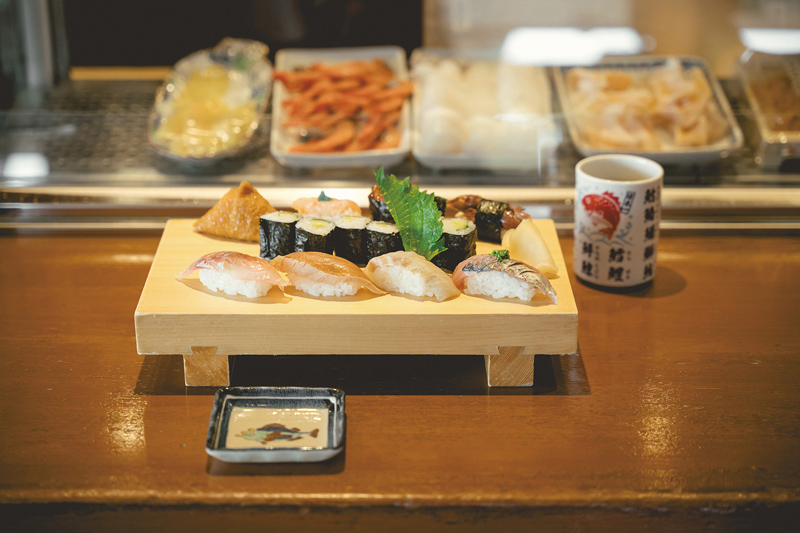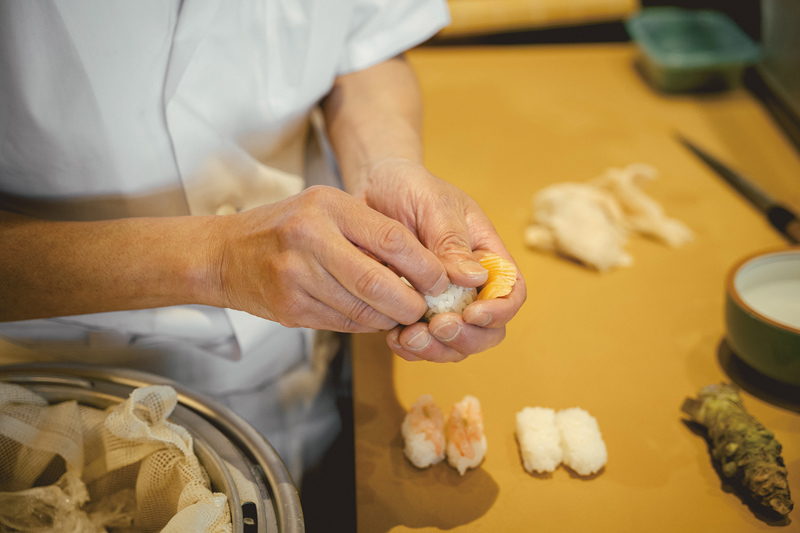Masumasu Kitokito
Masumasu Kitokito is a clever play on words in Japanese. Masumasu means more and more, but also references the masu (trout) in Toyama’s Masuzushi (tap here for details). Kitokito in the local dialect perfectly encapsulates the essence of great seafood: fresh, lively and delicious. Simply put, a visit to Toyama means encountering the best sushi of your life and going home feeling revitalized!
Why is Toyama considered The Sushi City?
① Kitokito Seafood
Kitokito, a term so beloved it was chosen for Toyama Airport’s official name. The exceptional quality derives from Toyama’s unique natural environment and rich fishing culture (tap here for details).
② Sushi Loved by Locals
Local residents truly adore sushi. In fact, statistics show that households in Toyama City spend more on sushi annually than anywhere else in Japan (tap here for details)!
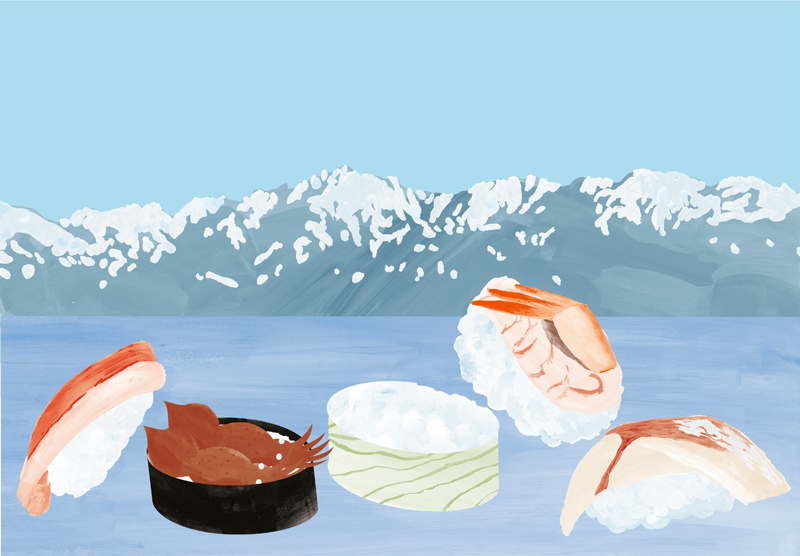
Vibrantly Fresh
Kitokito Seafood
Toyama Bay: Japan’s Natural Aquarium
Key to Toyama’s Kitokito seafood is its exceptionally rich natural environment. In spring and summer, vast amounts of nutrient-rich snowmelt from the 3,000-meter-high Tateyama Mountain Range cascade into Toyama Bay. The bay plummets to a depth of more than 1,000 meters, forming distinct zones of varying temperatures and water quality. This unique combination allows a wide variety of marine life to thrive, earning Toyama Bay its reputation as a natural aquarium.
Rich Variety of Seafood
This natural aquarium of Toyama Bay yields an extraordinary diversity of seafood. From winter’s buri (yellowtail) to spring’s firefly squid and summer’s white shrimp and Japanese Ivory Shell, each season brings its own unique treasures. The bay is home to as many as 500 species of marine life—including white fish like sea bream, red fish like tuna, blue fish such as horse mackerel and mackerel, plus shrimp, crab, squid, octopus, and shellfish. Contributing over 60% of all seafood found in the Sea of Japan, Toyama Bay’s abundance is truly remarkable.
From Sea to Sushi, in No Time At All
Toyama Bay’s plentiful marine life has inspired fishermen to develop diverse traditional fishing methods, including fixed net fishing. Over ten fishing ports dot the bay, with those in Toyama City bustling with hauls of local catch like white shrimp—a regional specialty—along with sardines, horse mackerel, mackerel, and yellowtail. The short distance from these ports to local sushi restaurants means you can enjoy an unparalleled array of exceptionally fresh seafood. This sea-to-table relationship is what makes Toyama City undeniably special.
Water and Rice: Unsung Heroes
While seafood is paramount, the allure of Toyama sushi extends to its foundational elements: water and rice. Pure and abundant water flowing from the Tateyama Mountain Range and Hida Highlands is a source of tremendous local pride. The rice, equally vital to great sushi, is among Japan’s finest varieties. The exquisite marriage of this superb rice with our fresh seafood forms the true heart of Toyama sushi.
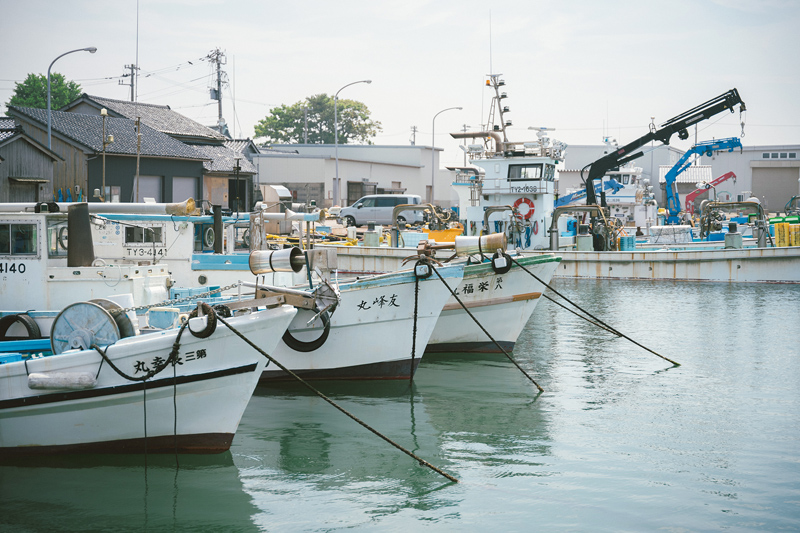
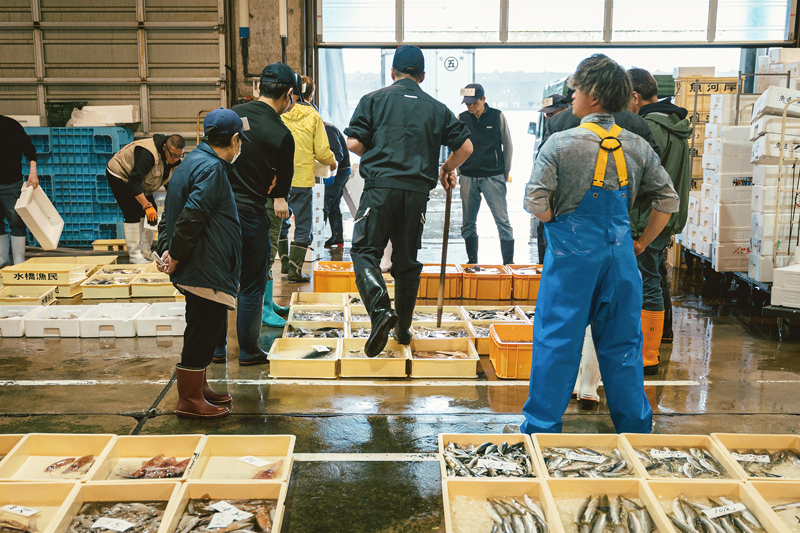
Toyama Citizens Love Sushi
Sushi & The City: A Timeless Pairing
Let’s take a quick look back. Nigiri sushi blossomed in the late Edo period (early 19th century) as a vibrant part of urban culture. It was street food, freshly made and served immediately from stalls, becoming a fast-food staple for busy commonfolk.
Fast forward to today’s Toyama City, which boasts the highest sushi expenditure in Japan.* From tablet-ordered conveyor belt sushi to traditional counter-style restaurants, Toyama embraces it all. This enduring love for sushi in Toyama isn’t just about the bountiful sea and rich land; it’s about a city that has nurtured and embraced its culinary heritage. Join us in celebrating Toyama’s sushi and its city, hand-in-hand.
* In 2024, Toyama City ranked first in Japan for average household expenditure on sushi at restaurants, spending ¥23,185 per household.
Explore by Tram
To tour Toyama City’s best sushi spots, hop on a tram and soak up the city’s vibe! These local conveyances, affectionately called shiden, fan out from Toyama Station with lines stretching south (towards the mountains) and north (towards the sea), plus a convenient Loop Line. They offer great access to attractions like Toyama Castle Park, the Toyama Glass Art Museum, and historic Iwase area. If the weather’s on your side, you might even catch a breathtaking view of the majestic Tateyama Mountain Range.
For more details, tap the link.
Discover Toyama’s “B-Side”
The New York Times’ Craig Mod, who recommends Toyama City as one of “52 Places to Go in 2025,” puts it perfectly: Toyama has a “B-side” charm. As one sushi chef noted, many visitors are seasoned travelers who have already explored much of Japan. This perhaps explains its appeal to those in the know—it’s still a bit of a hidden gem.
We invite you to visit Toyama and experience the city’s unique charm for yourself.
